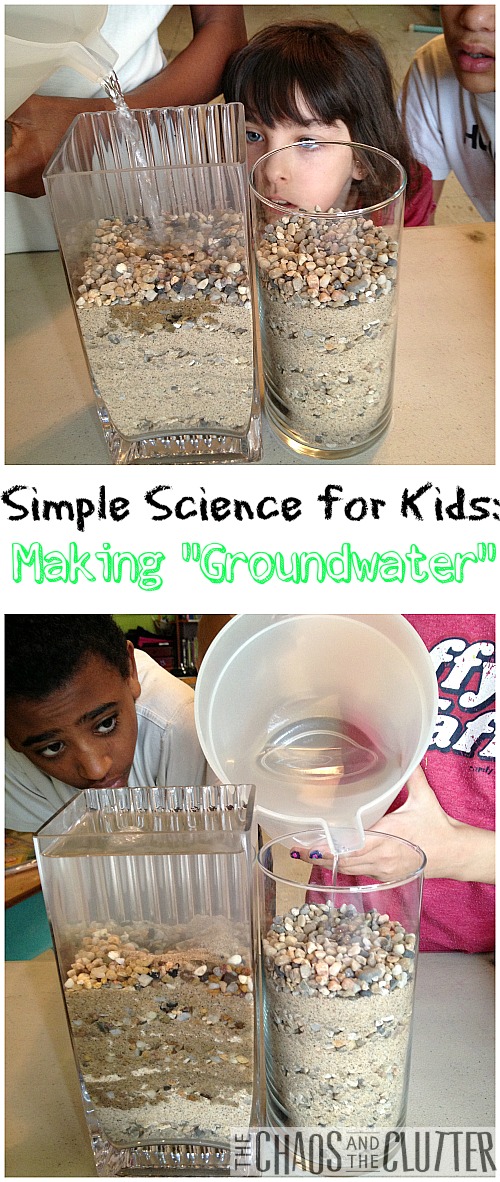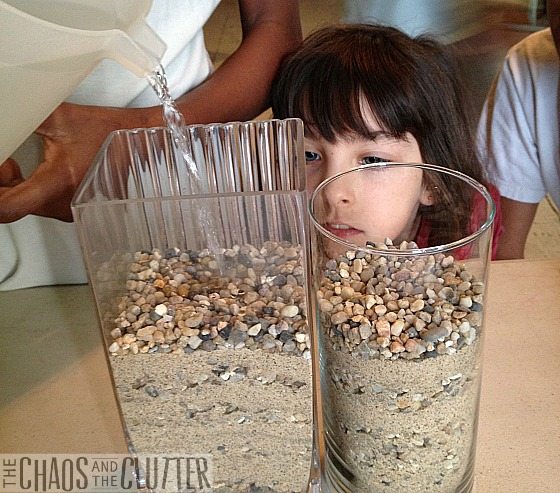This year, we have been using the science curriculum CKE Earth & Space. We have studied the Earth’s layers (see our Layers of the Earth model here), tectonic plates, volcanoes, earthquakes (see our easy earthquake experiment here), rock types, oceans, and the water table. This was one of the book’s hands-on activities for demonstrating the concept of groundwater.

Materials needed:
2 large clear glasses or vases
sand
gravel (we used aquarium gravel that we had left over from our History Sensory Bin)
pitcher of water
In each of the glass containers, layer sand and gravel alternating between the two until they are about 3/4 of the way full. This will create an aquifer. An aquifer is the layers of rock, soil and sand that contain water.
Slowly pour water into one of the containers, having your kids observe how the water is making its way through the small openings as it goes down.
In the first container, continue pouring until it is full (above the aquifer).

Next, slowly pour water into the second container, stopping about an inch BELOW the top of the aquifer. The level of the water in the second container is the water table. Below that, the aquifer is saturated. The glass of the container in this demonstration acts as impermeable rock.
Create what would happen if it were to rain by very slowly adding a bit more water to the second container. Have your kids observe and write down their observations. This demonstrates the recharging of the groundwater.
We kept our containers for a few weeks so that the kids could see that in the first one, there was never any room for more water, but in the second, as the ground soaked up more of the water and as time passed, we were able to add in a bit more water at a time as long as we never filled it above the top of the aquifer.
Vocabulary words that may be helpful in learning for this lesson:
groundwater, water table, aquifer, saturated, impermeable
If you are looking for other hands-on Science activities for learning about the Earth, you may be interested in following my CKE Earth & Space Pinterest board.
Follow Sharla Kostelyk’s board CKE Earth & Space on Pinterest.